













Photography Joe Lai
Set design Jade Boyeldieu d’Auvigny
Styling Lune Kuipers
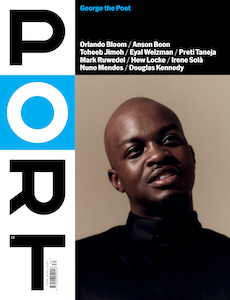
This article is taken from Port issue 30. To continue reading, buy the issue or subscribe here
Subscribe to Port Magazine annually and receive each issue to your door.
Get PORT in printSubscribe to Port Magazine annually and receive each issue to your door.
Get PORT in print














Photography Joe Lai
Set design Jade Boyeldieu d’Auvigny
Styling Lune Kuipers

This article is taken from Port issue 30. To continue reading, buy the issue or subscribe here
Carlo Capasa, chairman of Camera Nazionale della Moda Italiana, discusses MFW and the future of fashion
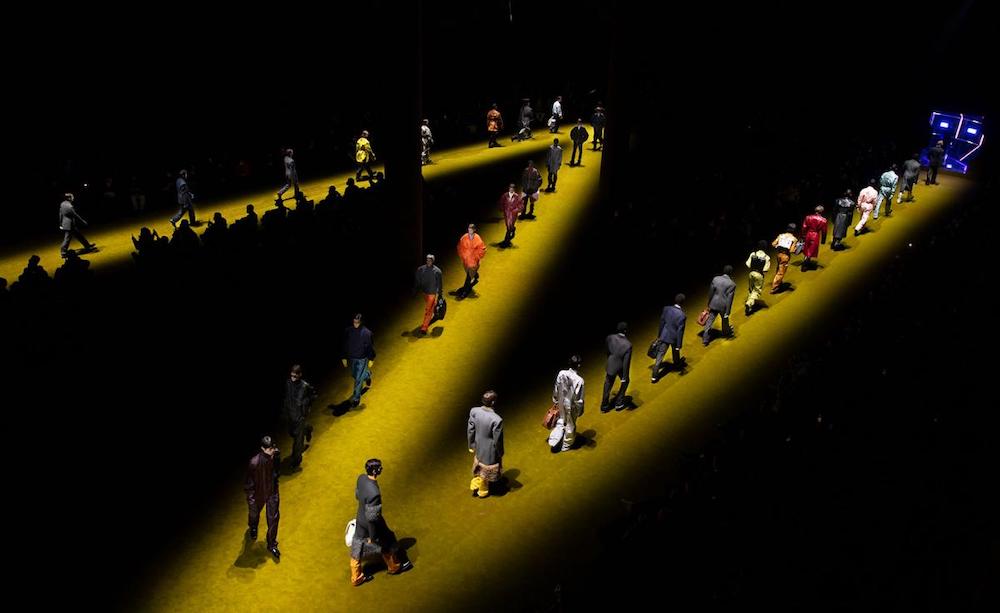
Apolitical and not-for-profit, the aims of Camera Nazionale della Moda Italiana (CNMI) have remained largely the same since its inception in 1958: to “represent the highest values of Italian fashion, and to protect, co-ordinate and strengthen the image of Italian fashion in Italy and abroad, as well as the technical, artistic and economic interests of its Associates”. Representing more than 200 companies across the sector, it plays a vital and global role in setting the fashion agenda, most visibly through Milan Fashion Week. January’s menswear offering remained on tenterhooks, unsure whether it would even be able to go ahead three days before launch, but in the end delivering 23 shows and 47 brand presentations. It was a week of Italian staples expressing themselves confidently – Prada, Zegna, Brioni and Fendi deserve special mention – as well as striking debuts, with brands like JW Anderson and 1017 ALYX 9SM presenting for the first time in the calendar of shows.
Conducting such an orchestra year on year (and through a pandemic) would shave years off my life, I confessed to Carlo Capasa, the charismatic chairman of CNMI. Capasa is simply too busy (and optimistic) to worry, and caught up with Port to discuss the association’s active work in upskilling Italian workers, fostering greater diversity and inclusion, and how covid has accelerated its digital capabilities.
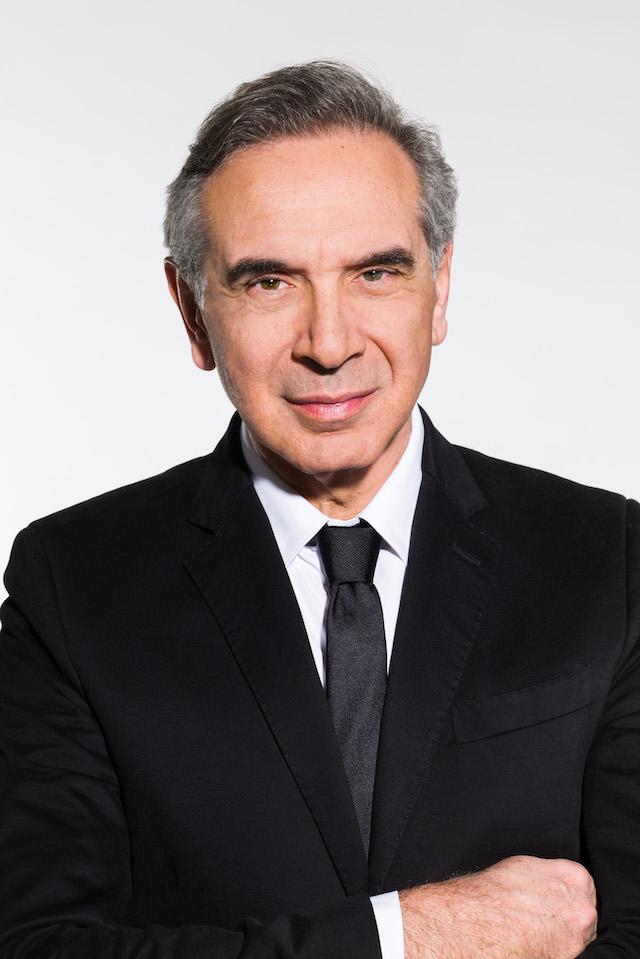
Congratulations on a fantastic week, have you had a moment to relax or is it onto the next thing?
We’re deep into, of course, the next fashion week! Women’s is complex to organise because there’s more brands, more presentations, but we’re hoping the covid situation in Europe will have improved slightly. Men’s was very successful, but it was stressful not knowing whether it was going to go ahead three days before we started… We are excited for February and hope we can deliver an even better week this time.
Before any of the shows, you started with a tribute to Giovanni Gastel, the photography legend who sadly passed away. This felt like a personal and moving way to begin.
He was an incredible, brilliant man. Charming, creative, unique. He was not only part of the Italian community, but to the global fashion community. Not only a great artist, but a great person. I thought it was quite natural to celebrate the first fashion week without him, with him. He was a friend of mine, and really a friend of everyones. We started with the heart.
Fendi, Brioni, Zegna and Prada in particular delivered striking collections, were there any others that surprised you?
All collections this season were particularly creative. During this crisis fashion has reacted with creativity, trying to break out of the pandemic and the restrictions it brings. Taking all this pressure and turning out something fresh, a new dream, new feeling, some positivity. I think it was one of the strongest collections in a creative sense, and I appreciate this approach, this attitude everybody brought.
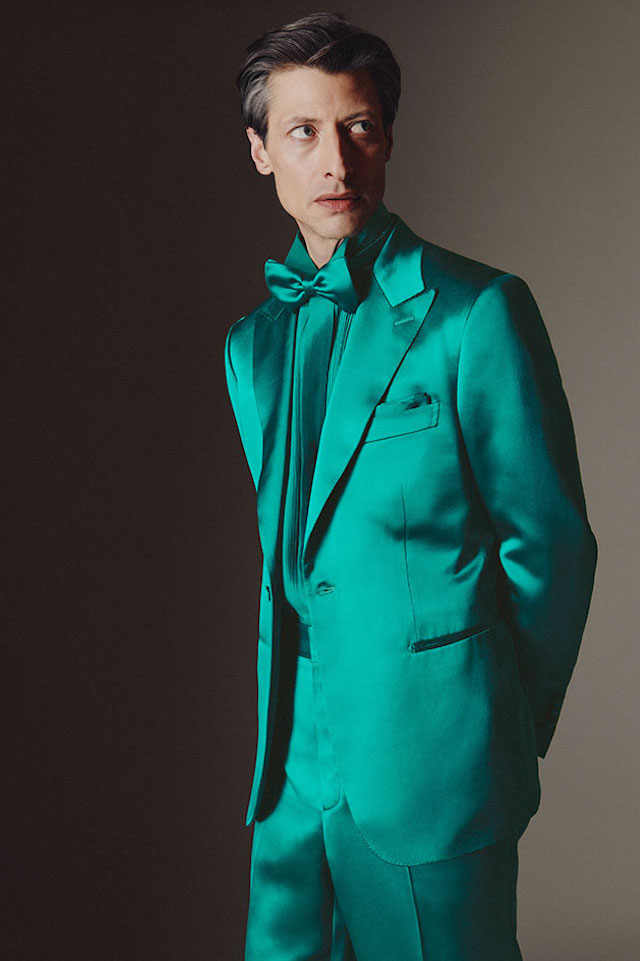
Pressure makes diamonds. There definitely seemed to be a note of elegance, people being keen to dress up, go out, feel luxurious. I suppose it is only natural after what we’ve gone through.
Yes, it is an appropriate reaction to the time we are living through, where many are confined to their homes…
In the same trousers, every day…
Yes, let’s take it to the next level, capture that energy of going out, of feeling good!
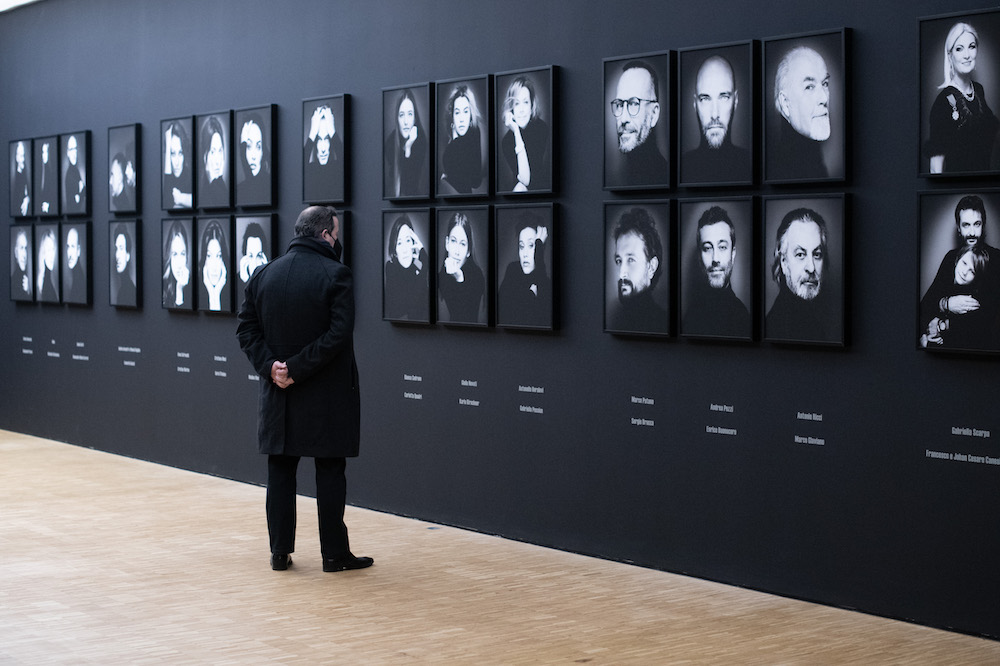
Throughout the last couple of years, MFW has been recognised as an industry standard, how have you found navigating this new terrain and making sure people are protected, whilst still showcasing what’s next?
We were forced to be very resilient, to react and adapt very quickly to any situation. There were weeks where we were almost 90% digital, which was completely new. In February 2020, we organized, in a few days, a new idea for a digital platform exclusively for China showcasing all that would happen in Milan. We made a deal with Tencent – allowing for direct streaming, essentially 24 hours of digital communication – and immediately hit 18 million people watching the week. Since then we’ve understood that the digital side of our offering was just as important as the physical. Last September, we had 56 million people watching and these dual tracks will remain, even when we’re out of the pandemic. Because although the experience of seeing a fashion show in the flesh is something you cannot miss – meeting other people, talking to the designers – with strong digital organisation, we are able to bring another kind of experience to everyone in the world, enlarging our community. With travel impossible, we found a way to travel, as it were. This idea of digital was already there, dormant, but was accelerated, meaning we gained five years of growth in six months. We’ve caught up on virtual collections, 3D pattern-making and printing, all these new frontiers that impact the production chain, in such a short time.
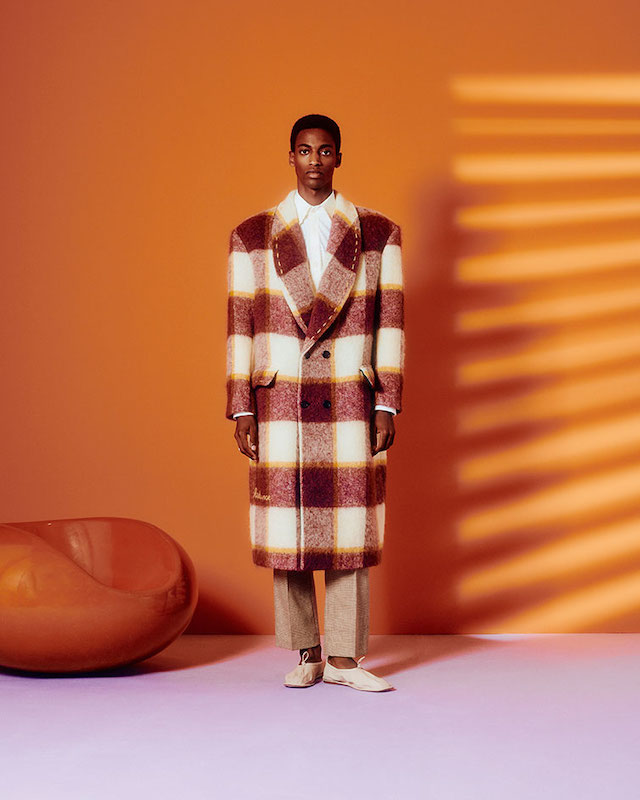
I know making sustainable changes to the industry and supporting young Italian talent is a focus area for CNMI, could you expand on this a little?
For many years we’ve been asking, what do we really need? Does fashion need to be so fast? The consciousness of people has been growing over the past two years, especially in the first year of the pandemic. Should there be limited production for some collections, so we’re not over producing, trying to be closer to actual consumer demand? Do we need constant sales, over consumption? Let’s change the idea of fashion, whether that’s a better understanding of recycling, reusing or renting vintage, using less plastic, having a say in the chemicals used in our industry. Beyond building a more circular economy, we’re trying to push a greater understanding on the human, social element. We’re talking to our community about rules and values, because we cannot ignore the people and hands that produce our garments. We’re therefore controlling more of our production chain and have just conducted an important survey to analyse the wages and work conditions of fashion workers in Italy, so we improve their conditions. All the brands we work with have embraced these recommendations, and we are proud to say we very recently signed an agreement with the ministry of labour and social policies, allowing us to digitally upskill and retrain 40,000 workers in the industry over the next five years. Amidst change, we want to make sure no one is left behind.
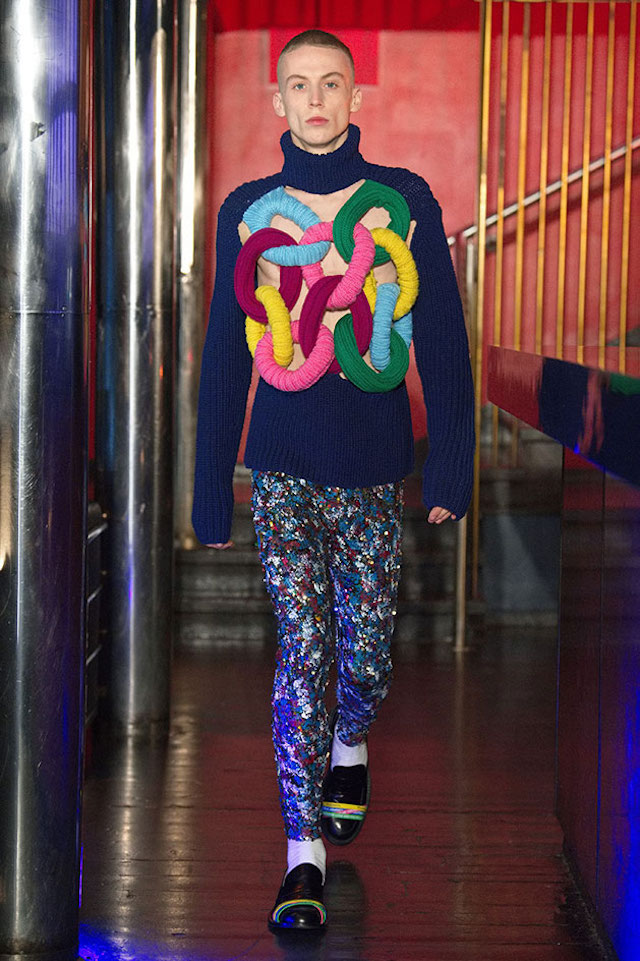
You have also been looking to encourage greater diversity and inclusion?
The fashion community has the opportunity to communicate at a high level some of these values, in some cases more so than the government can. It is an incredible responsibility because incredible change is needed, but we cannot hide. We have to stand up for what we think matters, and diversity is a value. I would like to think that fashion is open, that we do not judge by culture, religion, sexuality, race. For me, fashion was always a place where you could be a little more accepted, whoever you were. But, we have work to do. We published our manifesto on inclusiveness in 2019, following a great many roundtables with Bottega Veneta, Brioni, Dolce and Gabbana, Gucci, Zegna, Fendi, Armani, Moschino, Prada, Salvatore Ferragamo, Valentino and Versace, among others, all working together to layout structural and concrete changes needed. Whether that’s ensuring proper stylists can treat different hair textures before the runway, or working with charities such as Mygrants, a platform providing free training for refugees. Many of the those participants now have full time work. Fashion, by definition, is projected into and concerned with the future. So we are responsible in shaping and contributing to that future through diversity, which is the natural balance of things. The planet, our ecosystem, is rooted in it. Diversity is the beauty of difference. Unfortunately that is sometimes not obvious to our society.
What role do you think the pandemic will continue to play in your world?
As mentioned, fashion is always presenting what is next, in some way, always looking forward. Designers think about next seasons, new possibilities, and projected timelines. They are always putting hope that we are the end of the tunnel, that something will change. That we are emerging into something new. They think beyond lockdowns and try to capture another mood. This is the visionary side of fashion: anticipating wishes, our dreams of tomorrow.
Milano Fashion Week Women’s takes place 22nd-28th February, 2022













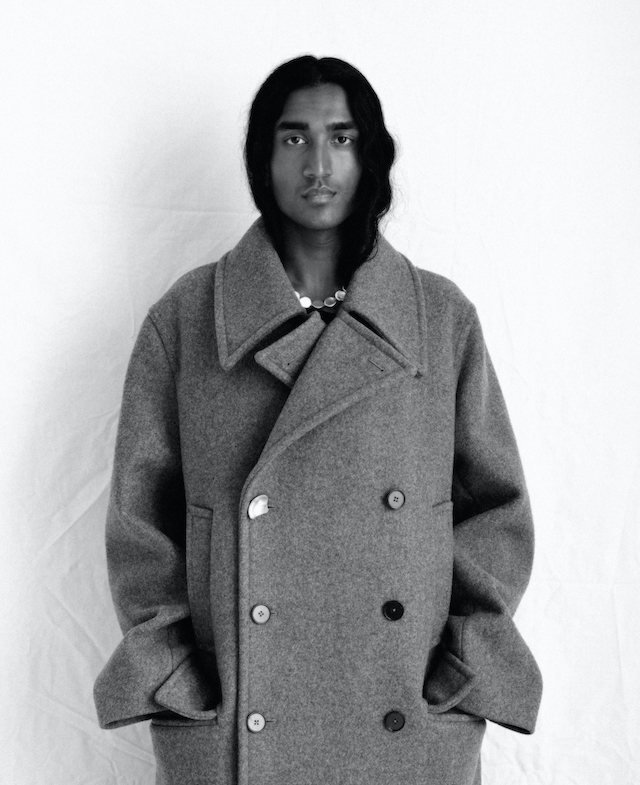
Photography Julien T. Hamon
Styling Lune Kuipers
Grooming Natsumi Ebiko using Oribe
Casting director Rama Casting
Models Francois Delacroix at The Claw Models and Leopold C. at Rock Men
Styling assistant Apolline Baillet
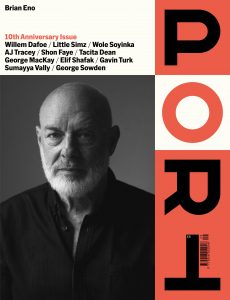
This article is taken from Port issue 29. To continue reading, buy the issue or subscribe here


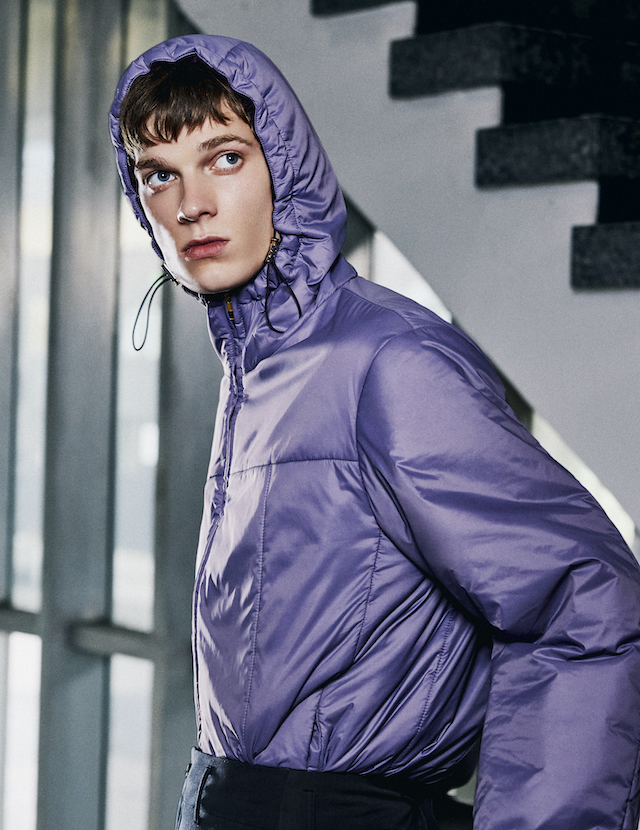



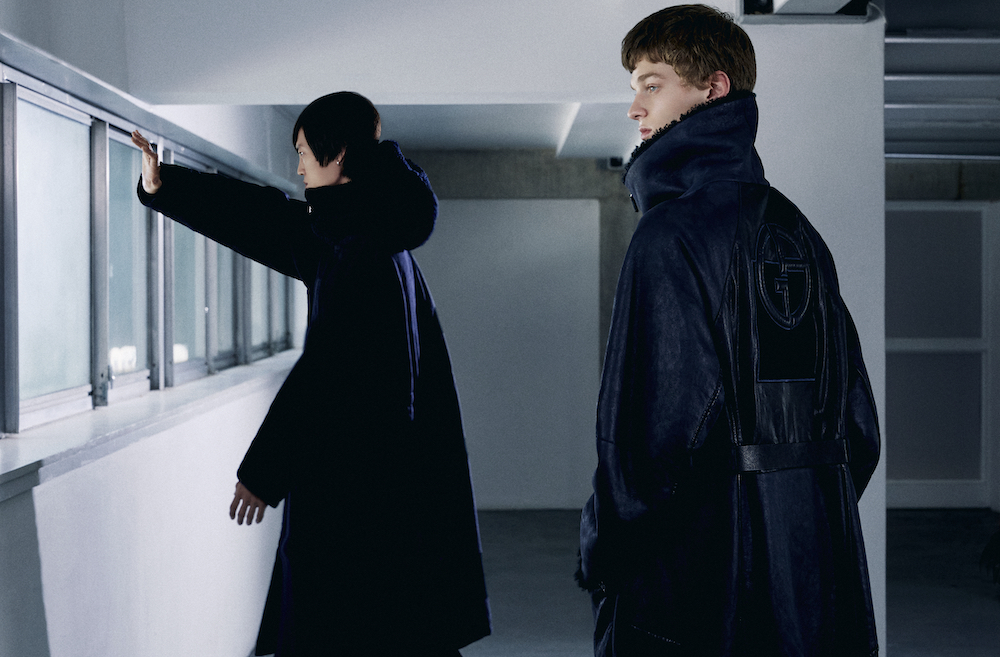





Photography Conor Clinch
Styling Mitchell Belk
Models Luard and Ungho at Elite London
Grooming Asahi Sano at Caren using Bumble and Bumble
Casting Ikki Casting
Production Kat Perry
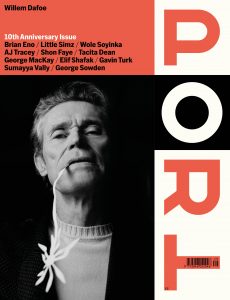
This article is taken from Port issue 29. To continue reading, buy the issue or subscribe here
Prada launches the second iteration of its ocean education partnership
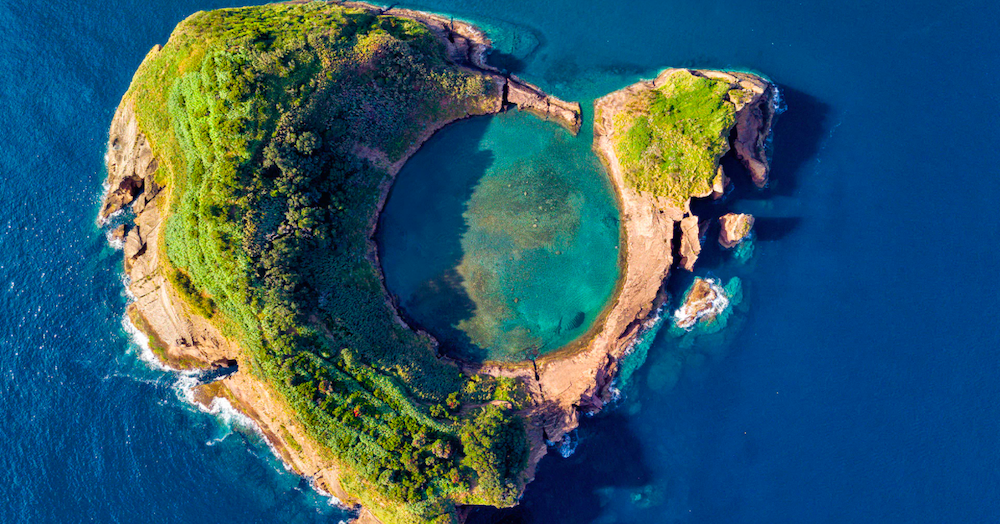
Last month, June 8th, marked World Oceans Day. An annual reminder they are the lungs of our planet, a critical part of the biosphere, and that their health is our own. 2021’s theme in particular – Life and Livelihoods – is wholly relevant to the UN Decade of Ocean Science for Sustainable Development, which aims to strengthen international cooperation to develop the research and technologies that can connect ocean science with the needs of society.
Seven outcomes outline where we need to arrive by the end of 2030; a clean ocean where sources of pollution are identified and reduced or removed, a resilient ocean where marine ecosystems are understood, protected, restored and managed, a productive ocean supporting sustainable food supply, a predicted ocean where society can respond to changing conditions, a safe ocean where life and livelihoods are protected from ocean-related hazards, an accessible ocean with open and equitable access to data, information technology and innovation, and finally, an inspiring ocean where society understands and values these bodies of water in relation to human wellbeing and sustainable development.
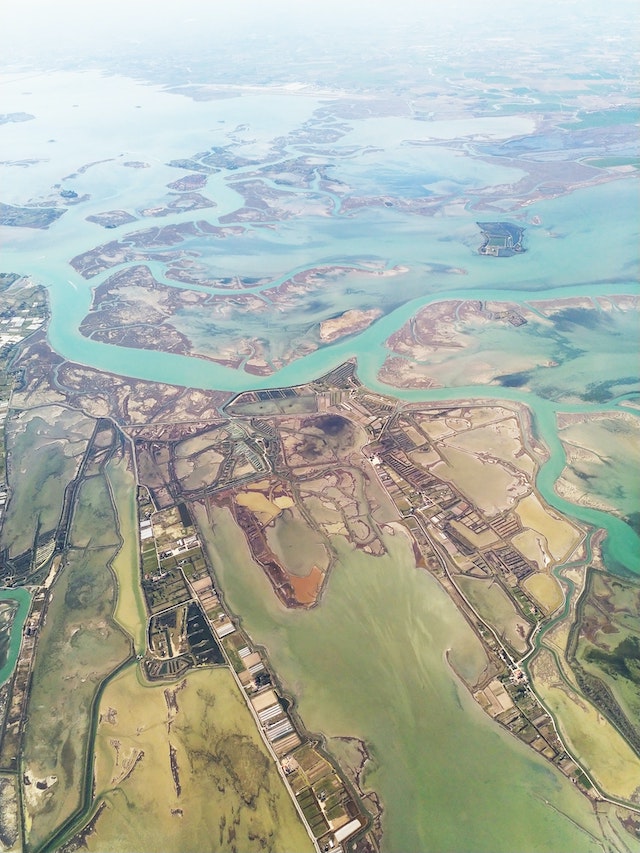
Running parallel to the day, Prada, the IOC-UNESCO, and project office of the Regional Bureau for Science and Culture in Europe, have announced the launch of the second edition of Sea Beyond, a tailored education programme built around ocean preservation and sustainability. Originally debuting in 2019 with support from a percentage of proceeds from the sales of the Prada Re-Nylon collection, the newest iteration will see the partners design an original educational module for secondary school students around the world, continuing to work with the same countries which took part in the first edition, but also adding nations such as Brazil, Peru and Namibia. Prada’s 13,000 strong workforce will also have more resources available via webinars, as well as an app, while the ‘Kindergarten of the Lagoon’ (Asillo della Lagoona) initiative in Venice will launch next year, with over 20 children taking part in the experimental site built around outdoor education principles from ‘Blue Schools’.
“This partnership has led to the successful implementation of ocean literacy projects; it has also supported the activities of museums during the pandemic,” notes Ana Luiza M. Thompson-Flores, Director of the UNESCO Regional Bureau for Science and Culture in Europe.
“Promoting public-private partnerships, such as this one, is critical for the successful implementation of the Agenda 2030 for Sustainable Development. The Ocean Decade provides an unparalleled opportunity to promote and enhance the way we study and understand the ocean; it can revolutionise public engagement towards the protection and safeguarding of the ocean. Ultimately, these new initiatives promoted in collaboration with Prada will constitute an important step forward towards the achievement of the ocean we want.”
Jamie Waters investigates the global launch of Prada’s versatile fibre range
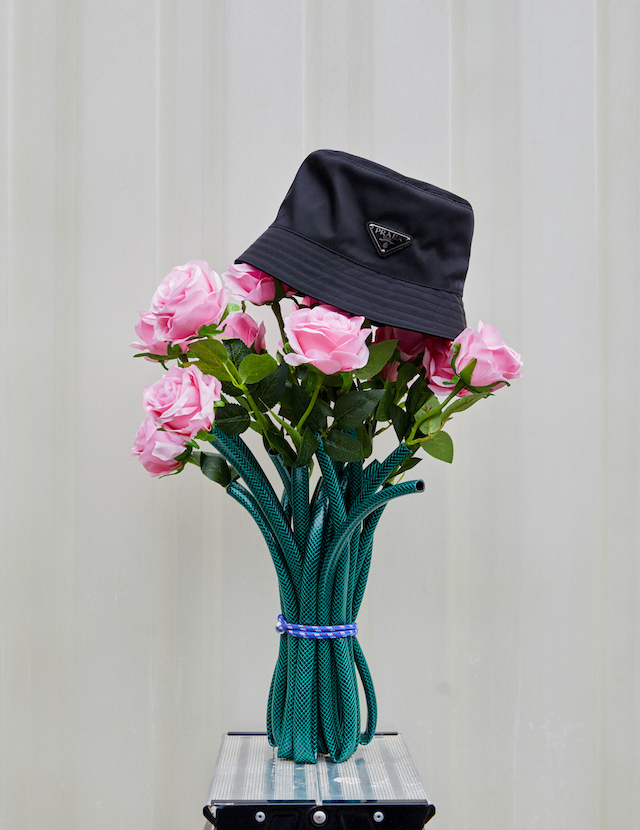
Nylon owes a great deal to Prada. Back in 1984 Miuccia Prada, the brand’s creative director and co-chief executive, unveiled the Vela, an unfussy black-nylon backpack that instantly changed consumer perceptions of the synthetic material from cheap to covetable. It challenged long-held ideas of what a luxury item looked like and inspired a new era of minimalist, practical dressing. It was also Prada’s first ‘It’ bag, catapulting the family-run brand to new heights of fame and desirability. The textile has remained a linchpin of Prada collections ever since.
So it makes sense that, more than three decades on, the Milanese house has made clear its intentions to reduce waste and tackle sustainability by zeroing in on nylon. Re-Nylon, launched in 2019, is a line of classic Prada pieces redone in a special type of recycled nylon. It started out with six bag styles for men and women, yet the plan is to go big: Lorenzo Bertelli, Prada Group head of marketing, has said the company is aiming to replace all of its virgin nylon with recycled nylon by the end of 2021. For a company that uses 700,000 metres of nylon annually, it’s a massive aim.
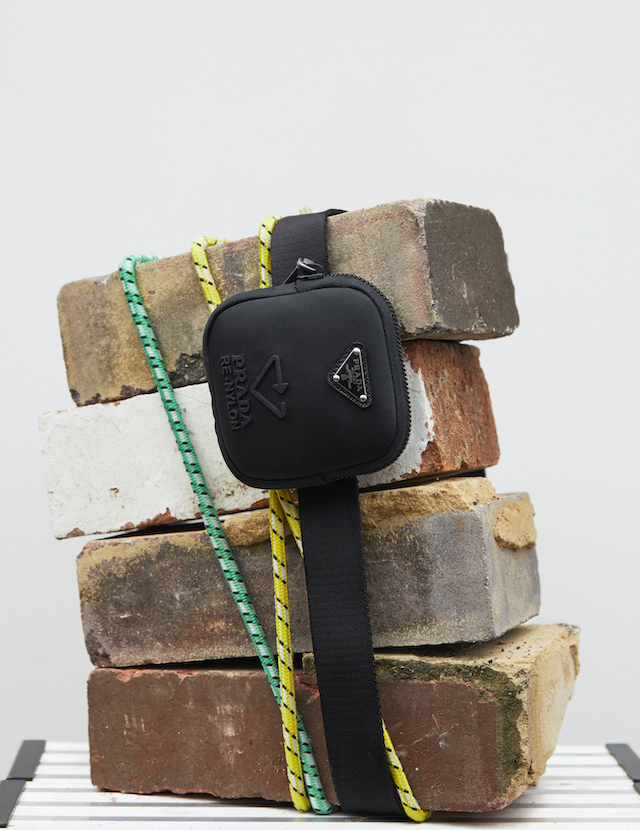
The latest step in Prada’s Re-Nylon venture was a collection first unveiled in September at Selfridges. Part of Project Earth, a new sustainability initiative by the Oxford Street department store, the Prada pop-up featured accessories like bucket hats, cross-body bags, totes, belts and hightop trainers – plus ready-to-wear collections for men and women. In this ground-floor space, agenda-setting Londoners could be found poring over clean-lined jackets with studded buttons, slim-cut trousers, Bermuda shorts and puffer jackets. Rendered in a strict palette of black or white, these eco-friendly garbs look much like Prada’s beloved mainline pieces – which is precisely the point. The monochromatic medley was presented against a backdrop of short films produced by National Geographic that spotlight sustainability pioneers, including a Chinese factory specialising in upcycling garments, a fishing-net-recycling enterprise in Cameroon and a factory in Arizona transforming old carpets into high-end materials.
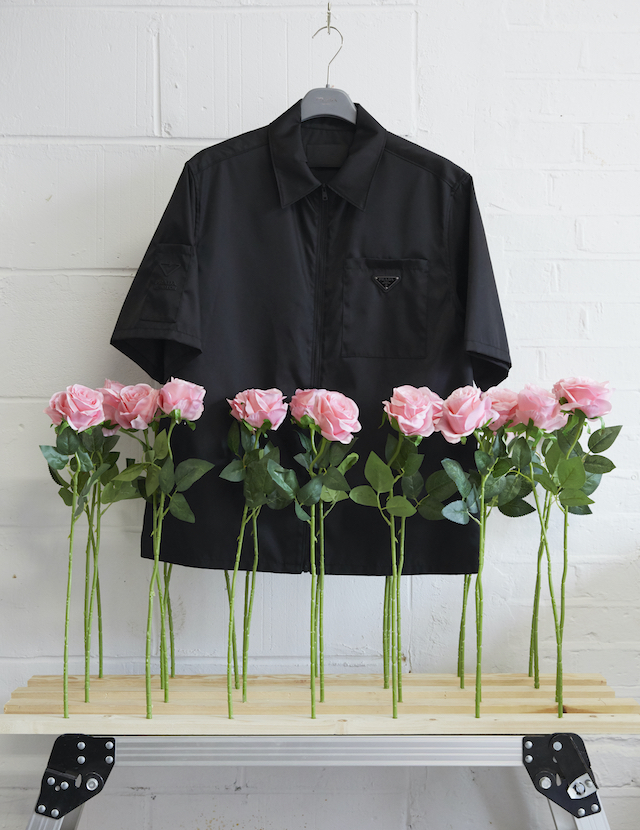
All Prada’s Re-Nylon designs are made from Econyl, a trademarked ‘regenerated nylon’ created via a complex process of recycling fishing nets and bits of carpet, rope and other synthetic cast-offs. Aquafil, a family-run Italian textile firm, is behind the material; after years of producing virgin nylon, it worked with scientists to figure out how to break down synthetic waste to its core chemical elements and rebuild it into a greener substance. Spun at a factory in Slovenia’s Vipava Valley, the resulting yarn is basically the same as virgin nylon – in how it looks and feels – but is a chemically different material. Crucially, unlike regular nylon, Econyl’s manufacturing process doesn’t produce enormous nitrous oxide emissions; plus, the fibre can be endlessly recycled without its quality diminishing. It’s a noteworthy – albeit more expensive – alternative.
In recent years, as sustainability concerns have skyrocketed, Econyl has become a darling of the fashion industry. The fibre is now featured in the collections of luxury and sportswear brands alike, who appreciate its light footprint and striking likeness to regular nylon. Rather unusually for a textile, Econyl has become a powerful brand in its own right. Designers advertise its use in their collections and, according to the hype-tracker Lyst, in 2019, internet searches for ‘Econyl’ were up 102 per cent on the previous year.
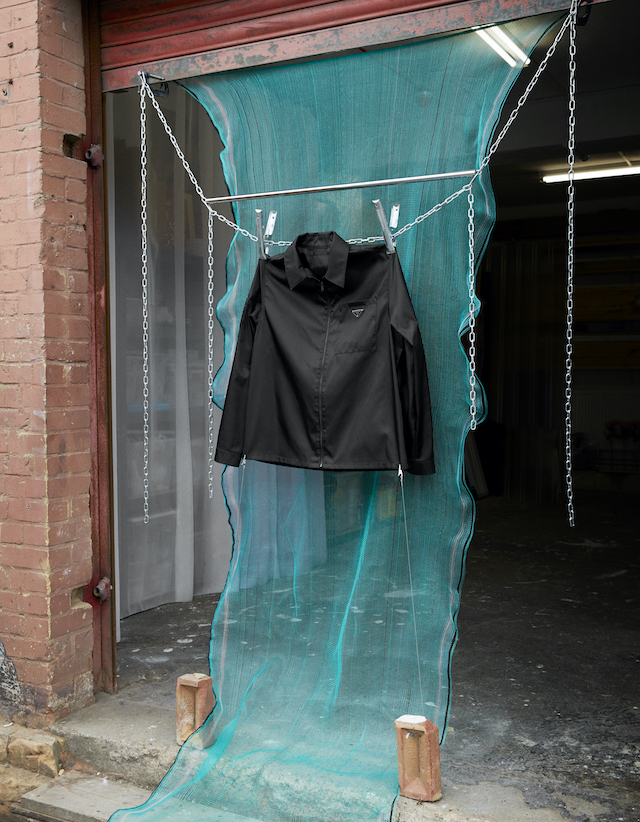
Nonetheless, Prada’s Re-Nylon project is surely the most high-profile embrace of Econyl seen to date, and it promises to springboard the fibre into a new level of public consciousness. The initiative fits into a broader effort by Prada. Last year the house made its green intentions clear, publishing a sustainability strategy that’s guided by the UN’s Sustainable Development Goals, and covers environmental policies (including the footprint of stores and clothing production), as well as social issues such as diversity in hiring and promoting art and culture.
Furthermore, in a first for a luxury brand, it inked a €50 million sustainability-linked loan with Crédit Agricole Group, meaning the interest rates will change if it hits certain eco targets. It also joined the environmentally focused G7 fashion pact initiated by French president Emmanuel Macron and banned fur from its collections. More recently, Prada launched Sea Beyond, an educational programme created in partnership with UNESCO’s Intergovernmental Oceanographic Commission, and funded by Re-Nylon proceeds, which involves presenting webinars about ocean waste to high-school teachers and students from cities including Berlin, Johannesburg and Shanghai.
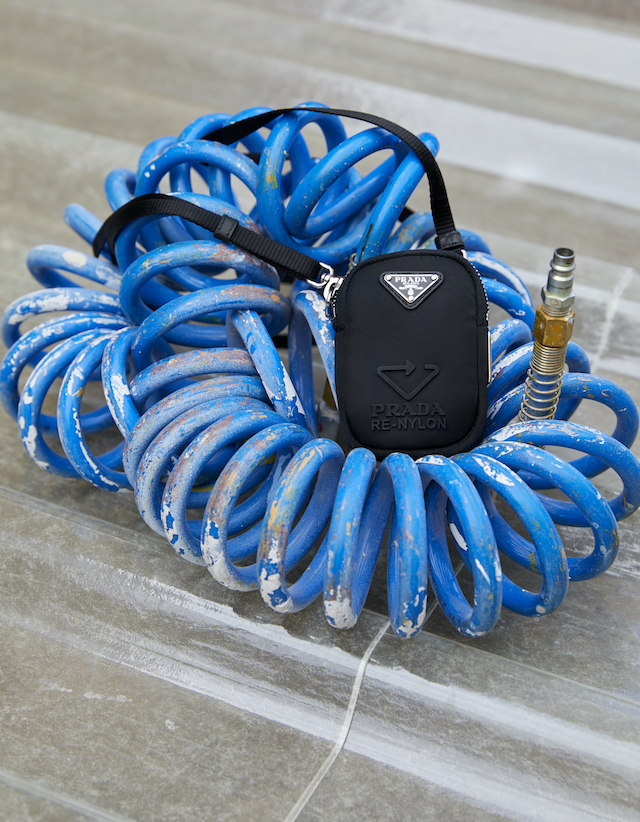
Viewed together, this phalanx of projects signifies Prada’s intentions looking forwards. Green is the goal – and Re-Nylon is the most emphatic emblem of this commitment to change. By swapping the brand’s signature material for an eco-friendly alternative, it’s showing that it is determined to shift its mindset from the inside out, one thread at a time.
Photography Jesse Laitinen
Set design Paulina Piipponen
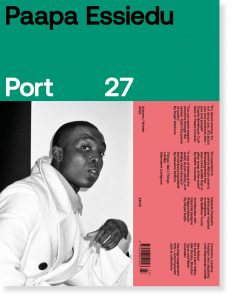
This article is taken from issue 27. To buy the issue or subscribe, click here
Photography Misha Taylor
Styling Rose Forde
Hair and makeup Hiroshi Matsushita using Oribe Hair Care
Casting Leila Hartley
Photography assistants Pedro Mendes Faria and Aurèle Ferrero
Styling assistants Christina Phillips and Charlotte Dunn
Models Rishi Robin at Rebel Management and Ninan Thomas at Premier
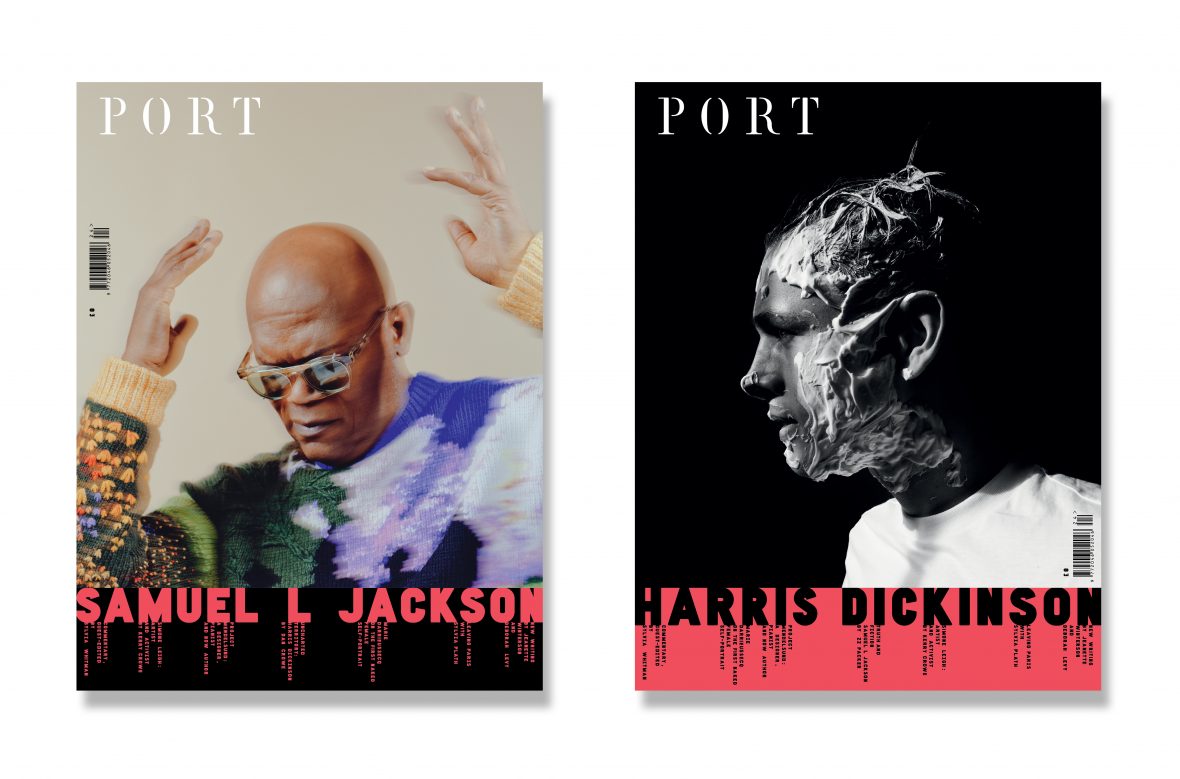
This article is taken from issue 24. To buy the issue or subscribe, click here
Prada partners with The Woolmark Company to create innovative merino wool uniforms for its Luna Rossa sailing team
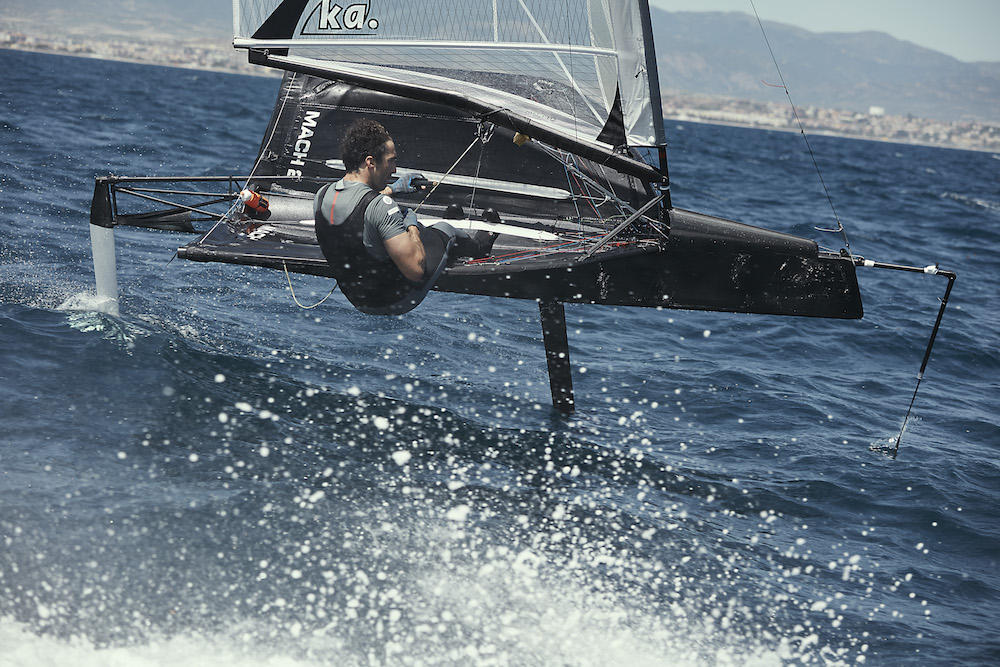
Wool is the world’s oldest fibre, used by humans since the Stone Age. Today we find ourselves in a different age – the Anthropocene – a geological era in which human activity has become an overwhelmingly dominant influence on its environment. Solutions to stem environmental decline above and below water are becoming more pressing with each passing day, and versatile materials such as wool may help to counterbalance this impact. 100% natural, renewable and biodegradable, it remains the most reused, recycled apparel fibre in the world. Its sustainability credentials, however, are only part of the reason why Prada has partnered with The Woolmark Company to create its new, merino wool sailing uniforms for the 36th America’s Cup. The main reason it’s enjoying a renaissance in performance sports, is that it performs.
Originally used in football kits circa 1960, merino wool draws moisture away from the body, maintaining a more regulated temperature. For extreme sports like sailing, with wildly varying temperatures, this is key for the Prada Luna Rossa skipper, Massimiliano Max Sirena: “Our physical activity is very demanding in terms of clothing: the garments we wear must be as isothermic, elastic, breathable and water resistant as possible. Well, I discovered on my own skin that Merino wool is all this.” The Woolmark Company – a subsidiary of Australian Wool Innovation, a not-for-profit enterprise working on behalf of 60,000 Australian woolgrowers – will research, develop and support the team during training, sailing and offshore activities ahead of the main race in 2021. Featuring innovative soft shell jackets, polo shirts, blousons, wetsuits and base-layers, a commercial capsule is scheduled to be released at a later date.
Following the announcement at Pitti Uomo, Florence, Port talked to Stuart McCullough – managing director of The Woolmark Company – about wool’s performance credentials, tackling marine pollution and why Australia’s sheep are peerless.

Why do you think wool is making a return to performance sports?
Wool is the original performance fibre. However, as synthetics came along, people somewhat forgot about wool in this way. Interestingly, no other fibre – natural or man-made – can match all of wool’s inherent benefits and both consumers and brands are realising this. In addition, wool’s eco-credentials are also becoming more widely recognised. Increased competition in the activewear market also means a growing number of brands are looking to innovate with natural performance fibres, such as Australian Merino wool. This move not only allows for a point of difference, but also fulfils the demand for an environmentally-aware consumer.
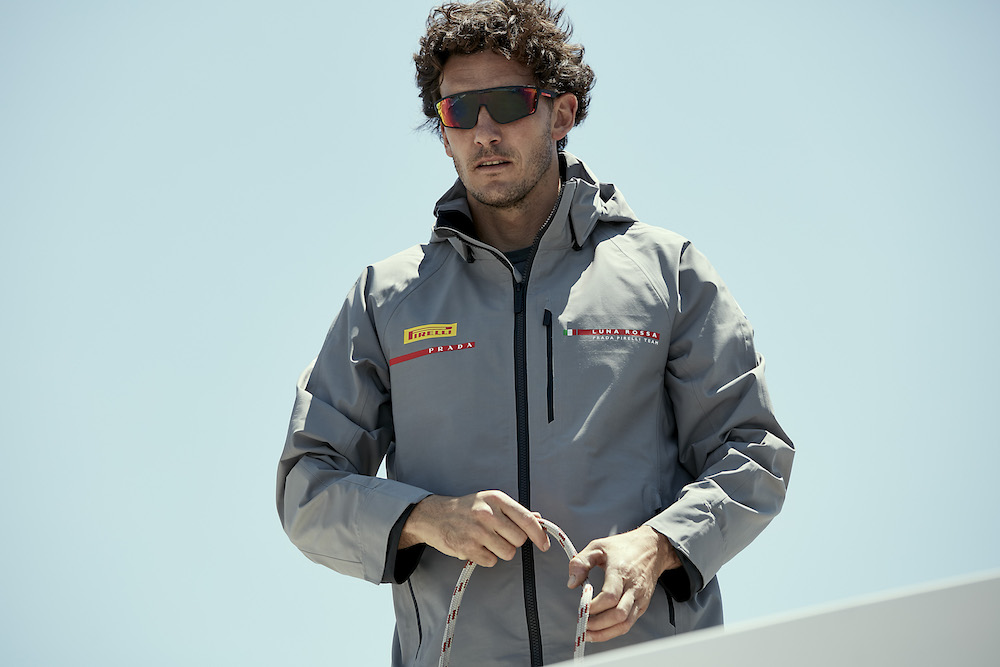
What are the main benefits and properties of merino wool for a sport like sailing?
Sailing, like any other demanding sport, requires apparel made from a technical fibre which can withstand high-levels of physical activity and also natural elements. Wool fibres are naturally breathable. They can absorb large quantities of moisture vapour and allow it to evaporate, making wool garments feel less clingy and more comfortable than garments made from other fibres. In contrast to synthetics, wool is an active fibre that reacts to changes in the body’s temperature. It maintains a drier microclimate next to skin, keeping you warm and dry – a major plus when out on the seas. Wool reduces the rate of skin cooling and the severity of post-exercise chill, which can range from uncomfortable to dangerous. Research shows when you stop exercising in very cold conditions, you can experience three times more chilling in synthetic garments than when wearing wool garments. This is due to wool fibre retaining – and only slowly releasing – moisture from within its structure, helping to maintain a higher skin temperature and less rapid cooling.
How will you be working with Prada in terms of research and development?
As the official technical partner, we’ve worked alongside their product development team to create the official uniforms, to be worn by all sailors and crew throughout the America’s Cup campaign. We have researched existing wool fabrics that are satisfying the technical requests of the team and co-ordinating the supply under Luna Rossa tech team briefing – working together with suppliers for finding new solutions and fabric innovations.
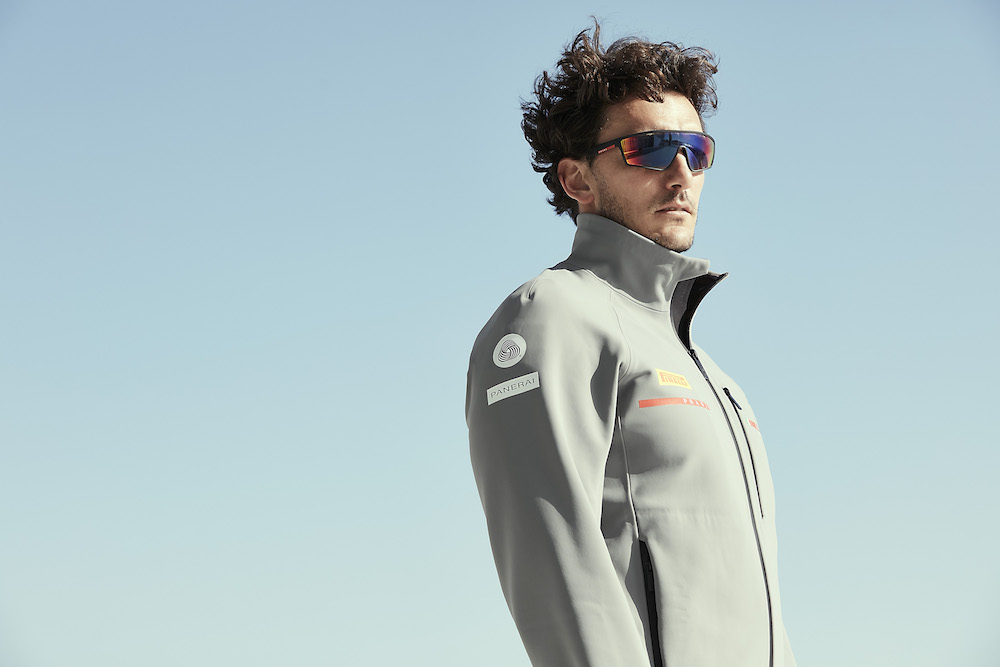
What role does sustainability have in the partnership and project?
There are a number of factors which play into this. Being 100% natural, renewable and biodegradable, Australian Merino wool is the responsible choice for conscious consumers. Biodegradability is particularly key for this project, with wool fibres degrading in both land and marine environments. When wool fibres biodegrade in land environments, they actually release valuable nutrients back into the earth. By degrading in marine environments, wool offers a lot less impact compared to the devastation caused by microplastics. As the most prestigious ocean race in the world, The America’s Cup can help raise the importance of ocean health and this partnership can help with that dialogue.
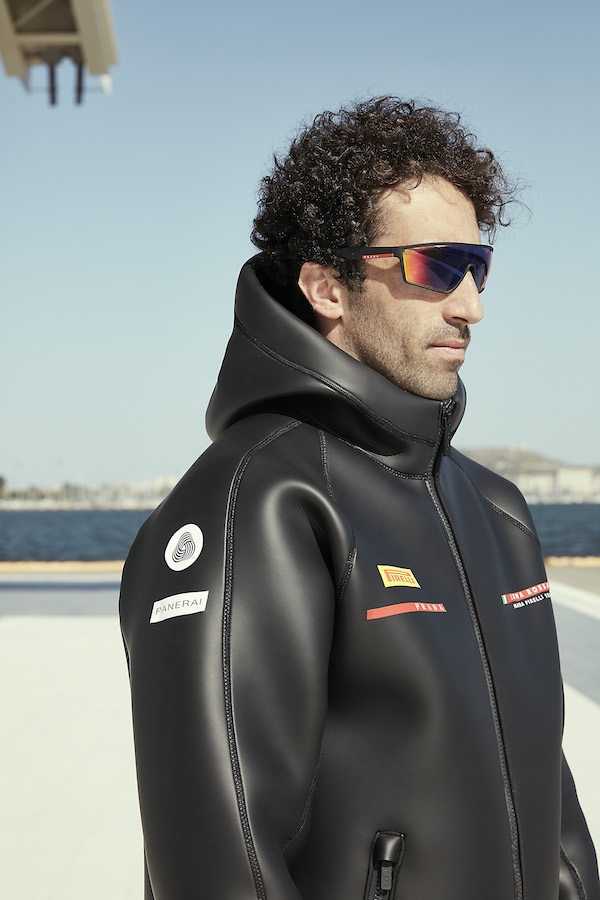
What responsibility does the fashion and textile industry have to issues like marine pollution?
It’s no secret that there’s a pretty dark underbelly to the global fashion and textile industry, with many reports saying it’s the second most polluting industry in the world. It’s for this reason the industry has a major responsibility to issues such as marine pollution. As much as 35% of microplastics in the marine environment are fibres from synthetic clothing, an amount that continues to increase. There needs to be more education – for both consumers and brands – about what impact certain fibres have on marine health. This also includes education about recycled fibres, such as recycled polyester and nylon.
Why is Australian wool a superior material?
Australian Merino wool is widely regarded as the finest and softest, perfectly suited to next-to-skin apparel. It was in Australia that the Merino sheep developed even finer fibre as early farmers succeeded in producing the first authentic Australian Merino wool. Raised on sustainable grassland terrain, these sheep are well-suited to grazing a variety of natural pastures. For generations, the farmers who produce this wool have shown how the Australian rural landscape can be managed effectively while protecting the natural environment, supporting rural communities, and meeting the needs of increasingly environmentally-aware customers.
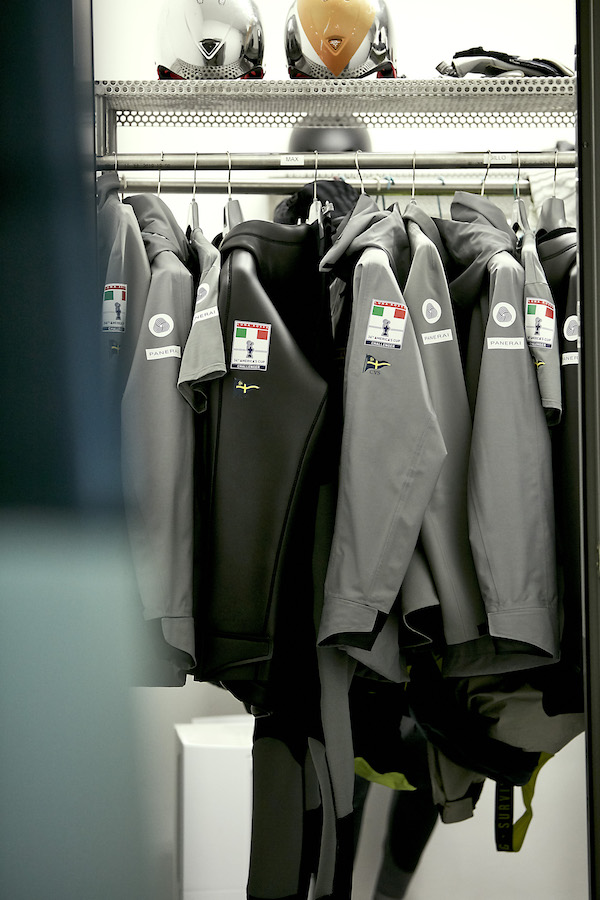
Do you have any other similar sportswear projects in the pipeline?
We’ve recently worked alongside sportswear brands Nagnata, APL and P.E Nation to release technical wool-rich collections. For all three brands, it was the first time they had worked with Merino wool. Sportswear will continue to play a pivotal role for us over the coming years.
Industrial designer Konstantin Grcic explains how performance artist Joseph Beuys influenced his playful interpretation of the Prada bag

Last year, the architect Rem Koolhaas asked me if I would be interested in being involved with the Prada Invites project. He, along with two other design teams – Herzog & de Meuron, and Ronan and Erwan Bouroullec – had been asked by the brand to play with the iconic black nylon fabric Prada developed in the 1980s.
I started thinking about the bags that Prada produced with the distinctive, beautiful, tightly woven material, and how those products had really made the brand what it is today; but Prada now is much more a serious fashion house than a bag company. I wanted to bring the two together – to combine a garment with a bag – and what came to mind was the performance artist Joseph Beuys, and his fishing vest.
I have vivid memories of seeing Beuys when I was a child. I grew up in a town near Düsseldorf, where he lived, and though I didn’t really know who Beuys was, he had this aura – you could tell he was important. He would be dressed, as ever, in a felt hat and fishing vest with buttoned pockets down the front, and I admired it without ever really knowing why.
I think perhaps I was attracted to the idea that he had developed his own uniform. I bought my own version of the vest some years later, as a teenager, and I started wearing a lot of secondhand army gear. It was well made and practical, but I also think, in a subconscious way, I had been inspired by Beuys to develop my own sense of style.
So that was the image, Beuys in his fishing vest, that came back to me for this project. I was quite excited by the idea, and we started to mock-up our own interpretations, playing with different forms until we arrived at the apron, which is more straightforward and casual. I don’t think it should be seen as a direct homage to Beuys, but rather, like his own vest, which was made for him by his wife, it is a self-made, simplified interpretation of the real, functional object.
As told to George Upton
Inspired by Grcic’s work, discover our round up of the best technical accessories to buy right now
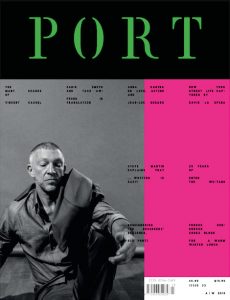
This article is taken from issue 23. To buy the issue or subscribe, click here.
Port‘s fashion editor picks the best looks from Milan’s Spring Summer 2019 show
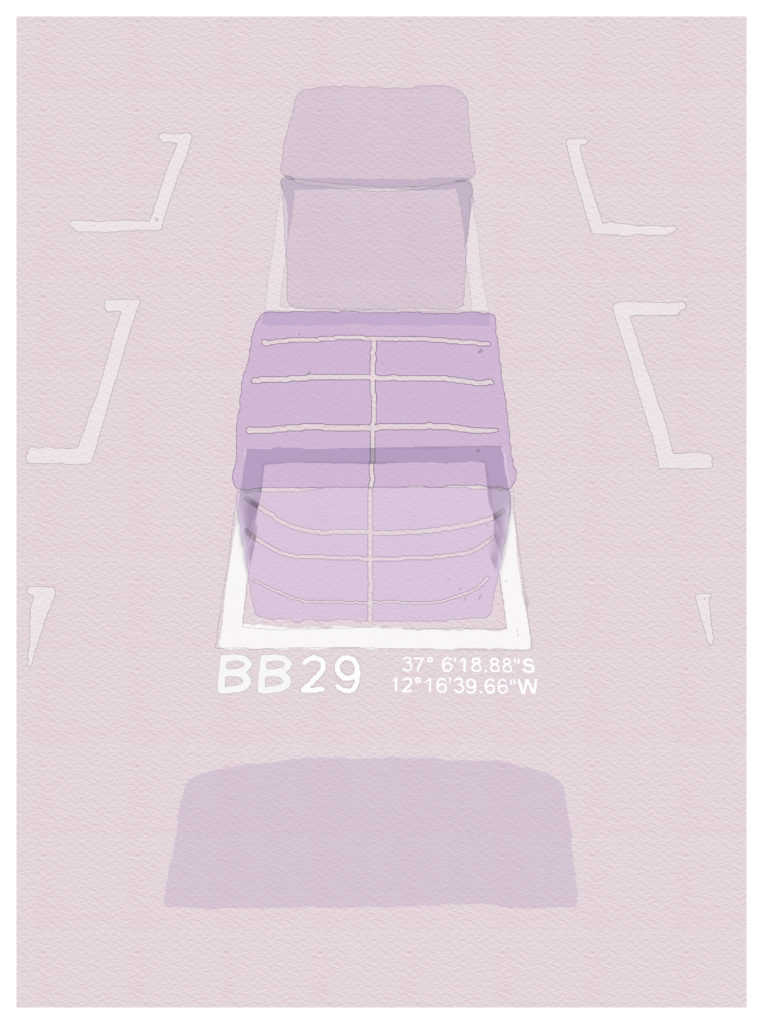
There was as much talk about the mosquitos as there was about fashion this year in Milan, which suggests the agenda and collections were perhaps not as engaging as they have been. Yet, as a relative newcomer to the Milan schedule, I still got my kicks, with Neil Barrett and Ermenegildo Zegna being particular favourites. For me, these two shows are up in the highlights of season that, in Milan, was characterised by the use of yellow, a sophisticated backlash to street-wear, and Zegna’s ‘new suit’.
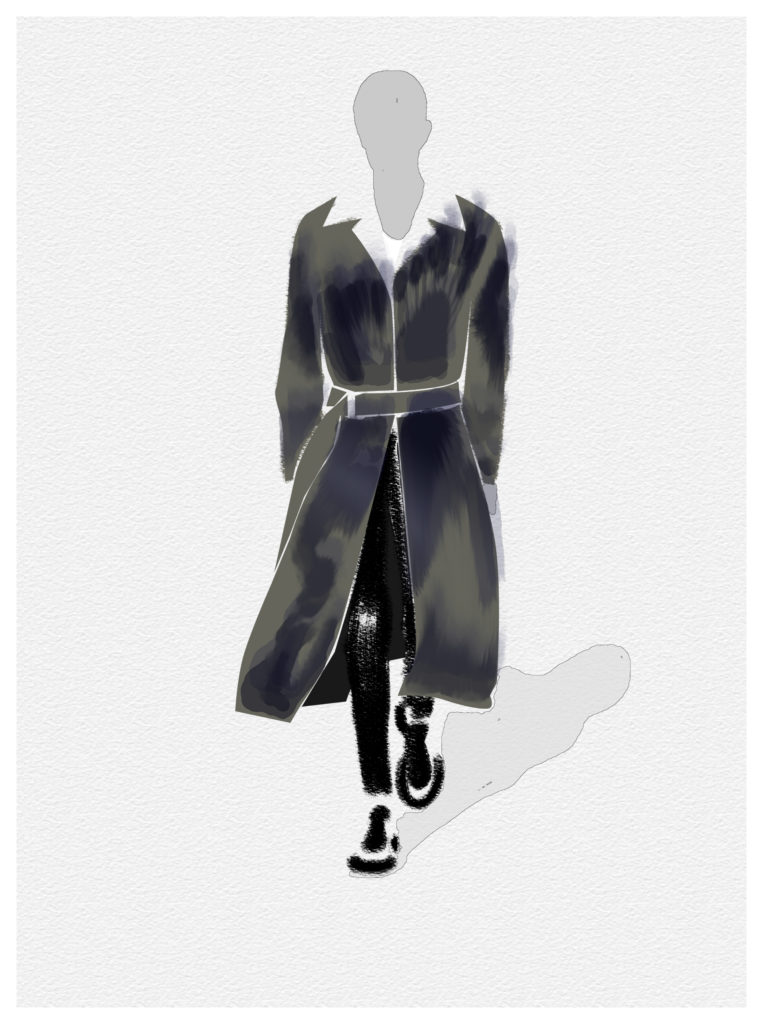
Neil Barrett – LOOK 26
A pioneer of sports-luxe and the go-to for directional tailoring, Neil Barrett this season moved away from his predominately monochrome shows of the past to explore ‘Sea/Flowers’ in a precise collection that was punchy with yellow and print. The colour play was apparent from the start as guests entered the space through yellow rubber strips hung from the ceiling, diffusing the light in the industrial space and creating a sensation of being underwater. Florals were managed in a modern and masculine way – some printed as if medals and here magnified to create an all over-print on this beautifully laid-back coat.
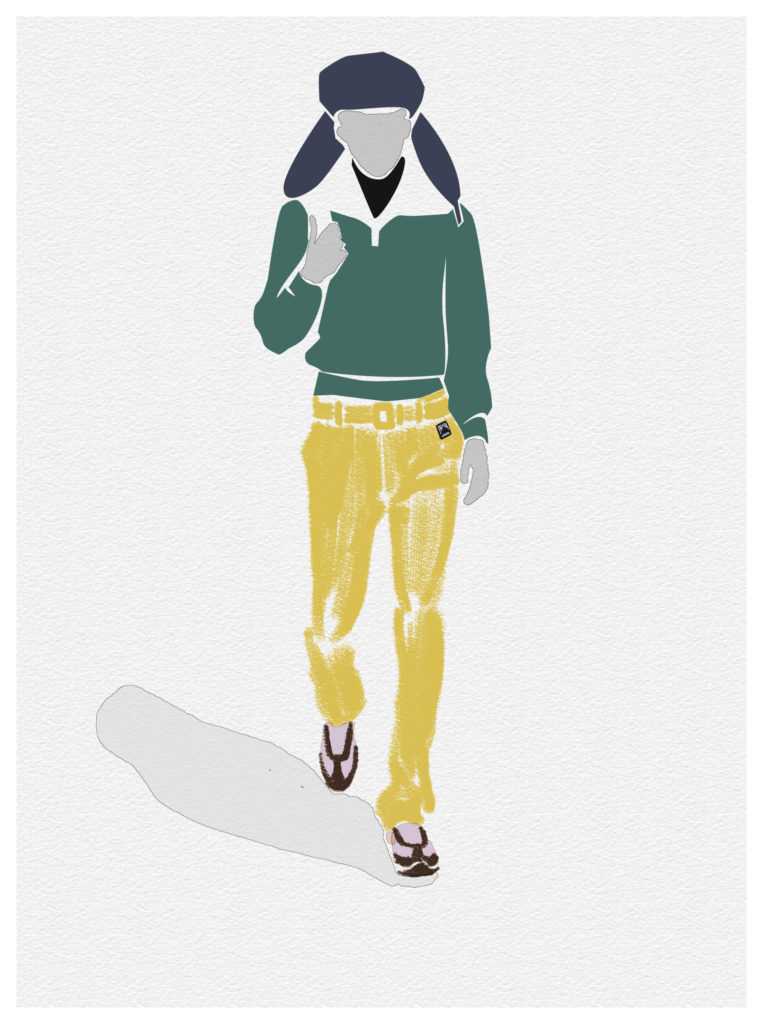
PRADA – LOOK 29
Taking the mundane and making it desirable, Prada played its card for the reserved rather than the flash-pack this season. Sat on inflatable cubes that were lit with futuristic purple hue, guests saw an army of nerds descend. This zipped knit – reminiscent of retro skiwear and alpine adventures – was paired with the collection’s signature high-waisted belted trousers in vivid yellow and an oversized trapper hat, and perfectly captures Miuccia Prada’s playful exploration of both character and form.
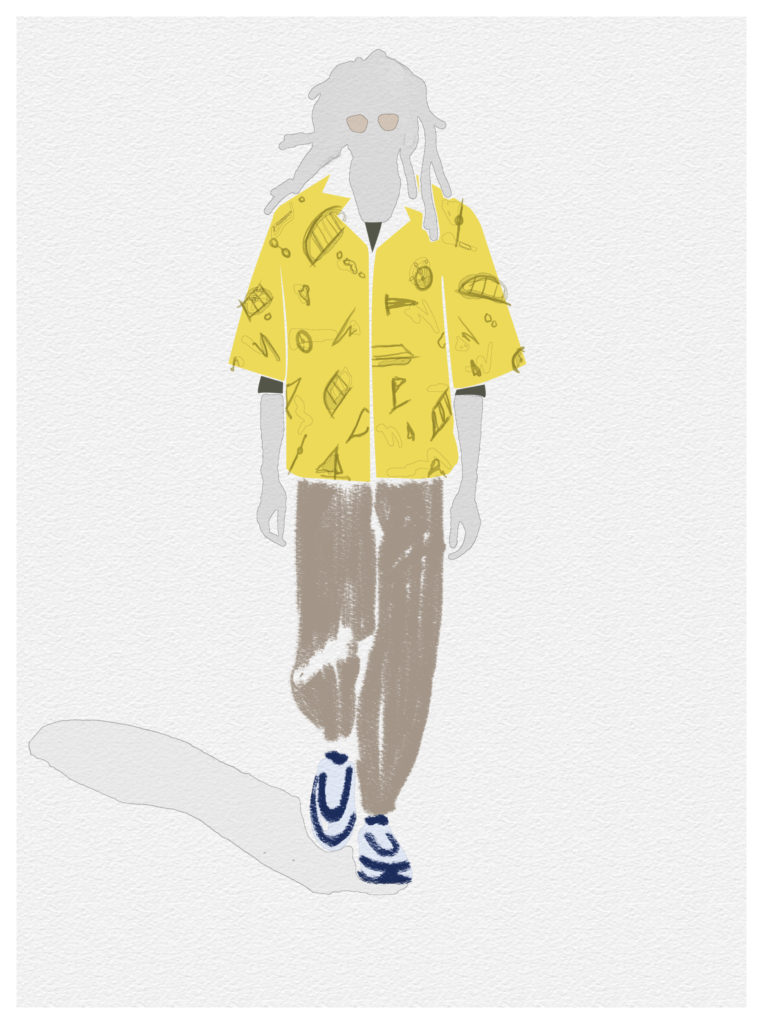
ZEGNA – LOOK 25
Blurring the line between sophistication and streetwear, Ermenegildo Zegna reached out to the post-millennials without leaving its core audience behind. Set against the often-overlooked grandeur of Palazzo Mondadori – conceived by Brazilian architect Oscar Nieymar – both collection and setting told the story of how sharpness could be married with functional ease. Alessandro Satori’s cuffed trousers were once again present, paired here with a printed boxy shirt over a hardly-there mesh top, giving the sense of weightlessness that Satori desired.
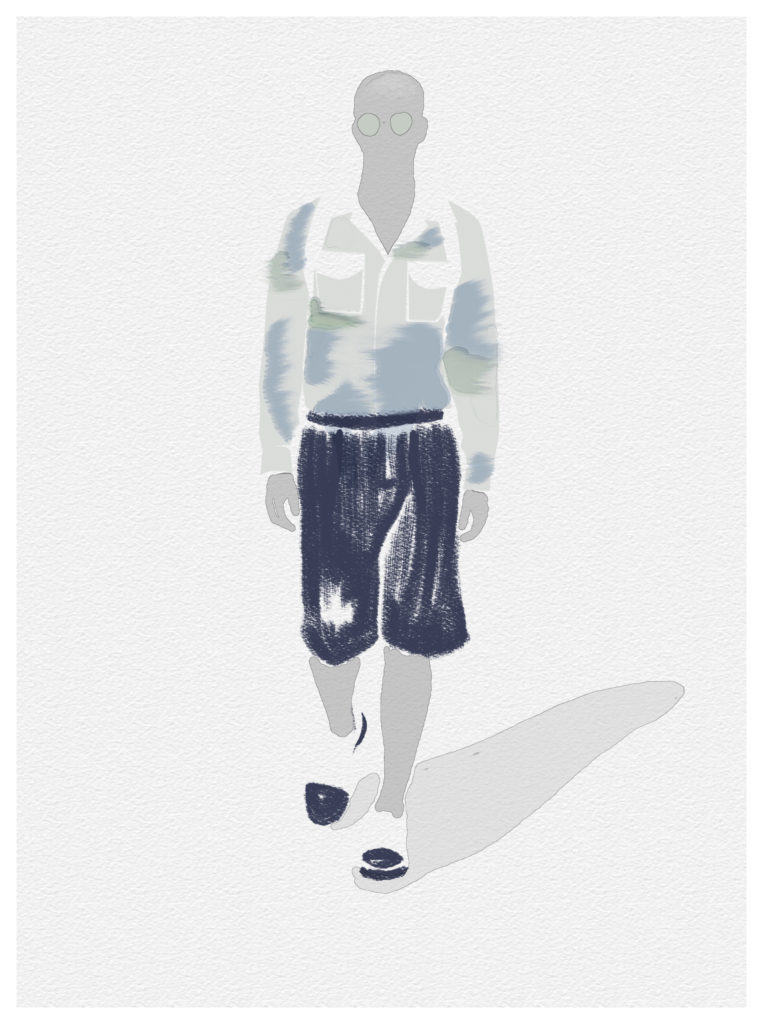
GIORGIO ARMANI – LOOK 71
Proving he is a veteran designer who will not be deterred by the banging of the trend drum for streetwear or influencer-friendly clothes, Giorgio Armani delivered a simple yet fluid collection, which was easy to understand and trust. Taking place in the familiar setting of the Armani Silos, on the usual cast of statuesque models, we saw the return of the double-breasted jacket and a perfect wardrobe for modern nomads, including this relaxed ethnic-printed silk shirt and easy to wear board shorts.
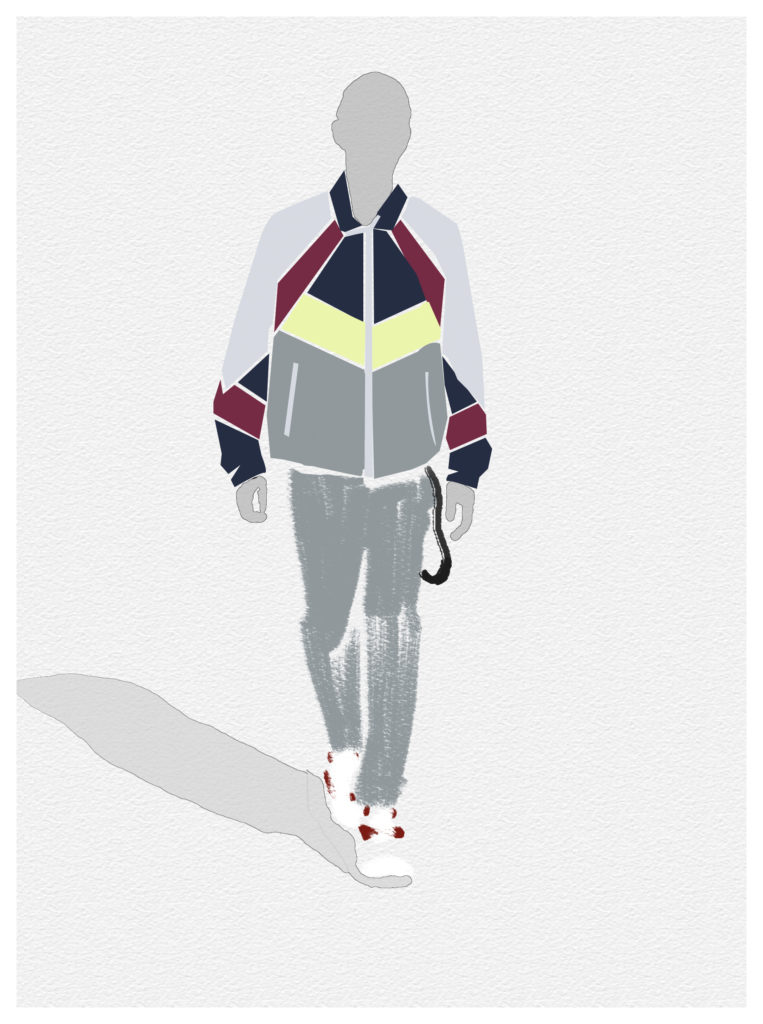
DSQUARED2 – LOOK 32
Maintaining their maverick reputation, the Caten Twins combined an unlikely mix of athleisure, military and undone corsetry to create a collection that felt both very on-trend and very them. Set in industrial warehouse space, with it’s ominous red-light runway, it were as if we had been transported to the heart of clubland in some dystopian future, watching the club kids walk by in their heavily layered attire. More subtle looks such as this oversized track-top and pants in heritage checks (which would usually be reserved for tailoring) with highlighter neon stripes, made it both interesting and wearable.
New Talent
For years Milan has been resolutely focused on the established fashion houses, with fresh graduates in the city being encouraged to quickly join the most esteemed brand they can find. So it was satisfying to see the capital of luxury fashion begin to offer support for emerging talent through initiatives set up to nurture new designers and their labels. There is a new spirit of youth in the city.
One such initiative is the Camera Nazionale della Moda prize, now in it’s fourth year. This season Port sat on the judging panel alongside leading industry figures – including Diesel founder and chairman of OTB Renzo Rossi, Angela Missoni, the creative director of Missoni, and Sara Sozzani Maino, deputy editor-in-chief of Vogue Italia – to decide that Mauro Muzio Medaglia of Accademia Costume and Moda was to receive the mentorship scheme and 10,000€ towards his brand.
“The prize I received took me by surprise,” Medaglia said after the presentation. “It has been an honour to receive it and I will work to transform this opportunity in a solid base for my future. The support I received from Camera Nazionale della Moda Italiana was very important, not only because it helped me in the development of my collection, but also because it is an endorsement for my career.”
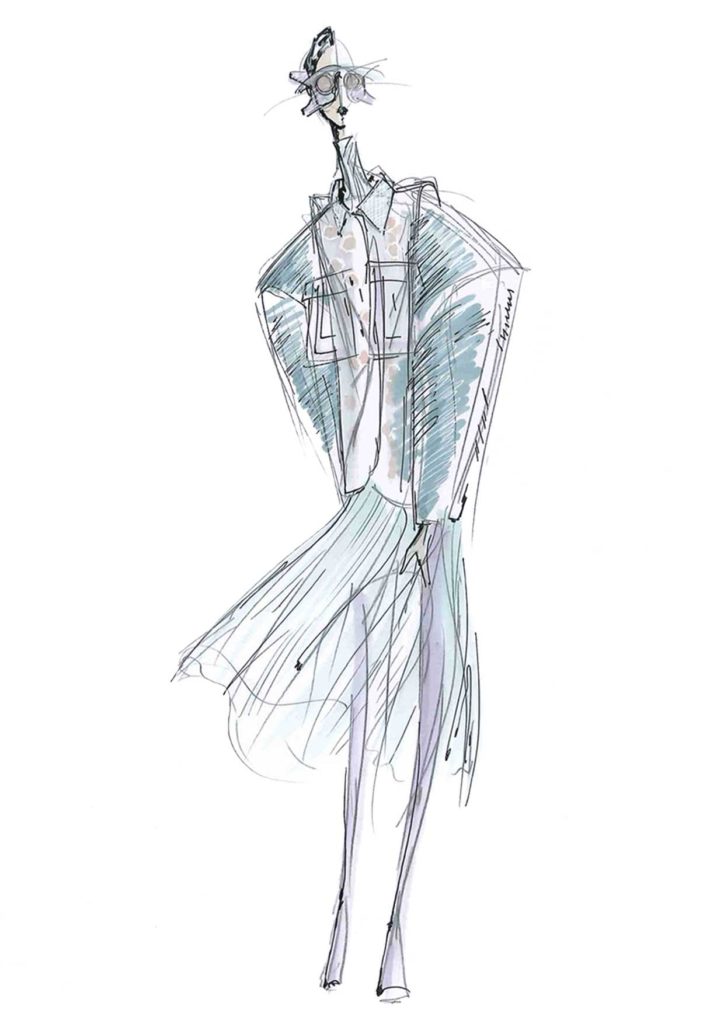
Medaglia’s sculptural touch and attention to tailoring swung the decision in his favour. A palette of soft-hues in contrasting fabrics were delicately layered with a finesse the excels the experience of this designer, and the silhouettes, with their exaggerated form, added the final contemporary note to the collection.
“Growing new talents is part of the mission of the Association and this event has a key role to confer visibility to the work and talent of the future generations,” said president of the Camera Nazionale della Moda Italiana, Carlo Capasa. “This year the CNMI celebrated the 4th edition of Milano Moda Graduate and had the privilege to open the Men’s Fashion Week. With this, we wanted to underline the importance of supporting new talents, promoting the creativity and capacity of the most merit-worthy students in the Italian fashion schools that are the future of fashion. The event fulfils the CNMI’s desire to stimulate a dialogue between the most important luxury brands and the new generation of designers, who bring fresh perspectives to the fashion system. “
Runway illustrations Jayma Sacco